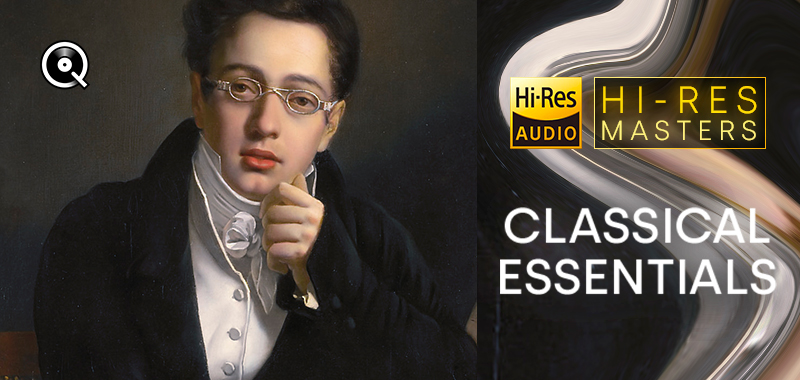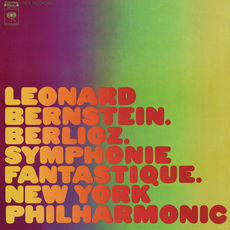An innovative catalogue
Composed from a largely autobiographical literary programme out of Berlioz’s wild imagination, the “obsession” of an opium addict and a man in love, the Symphonie fantastique provides a genuine catalogue of bold harmonic innovations: parallel chords, unresolved dissonances, a completely new writing style in speech and arrangement, an overabundant orchestration with four harps (at least), bells, ophicleides, and several timbals requiring four timpanists, as well as all sorts of extravagant ideas, leading up to the tumultuous peroration in the form of a musical cataclysm of a new sort, which to this day blows listeners away. While Berlioz’s influences are numerous - Beethoven’s latest symphonies, Weber’s Freischütz, but also Goethe, Shakespeare and Victor Hugo - the composer managed to invent a brand-new world whose influences extended across the globe, including to Russia, where Berlioz’s orchestration was largely used and carried forward by such local composers, as the likes of Rimsky-Korsakov and Stravinsky. And in the early 20th century, in a great boomerang effect, these same Russians influenced young French artists like Debussy and Ravel, but that is another story.
A playground for conductors
The original 1830 score was lost and isn’t the one we know today. Aware of his work’s shortcomings, Berlioz spent the following two years revising it before publication in 1835, with Franz Liszt’s extraordinary version for piano. It took ten more years before he released an orchestra score. In other words, it’s through Liszt’s piano transcription that the Symphonie fantastique entered the German culture spheres, publicised by Robert Schumann in a very enthusiastic article. The Symphonie fantastique rose to prominence as a new standard for programme music, later leveraged by numerous composers such as Liszt, Mahler, Tchaikovsky and Saint-Saëns. It also contributed to the glory days of a new stage demiurge, half-god half-despot: the conductor. Some, as we’ll see further, were closely associated with this work, or identified themselves to the piece − at times unreasonably so − with the likes of Leopold Stokowski or Carlos Païta producing album versions that although flamboyant, were highly questionable from a stylistic standpoint.
A nightmare for sound engineers
The Symphonie fantastique was recorded with the advent of electrical recording in 1925. While this new technology allowed the conductor to shine on his podium, it posed critical sound-recording challenges. The Berliozian orchestra was still loud and clear, but the recording techniques of the time didn’t allow microphones to capture it accurately. Listeners had to wait for the innovations of the 1940s, the advent of LPs in the early 1950s, and the spread of stereophony the following decade to fully enjoy the Symphonie fantastique in their living room.
Recidivists
Several conductors specialised in this work, returning to it over and over with technical innovations or their own artistic evolution. Among these were Charles Munch with twelve studio and live versions, Pierre Monteux with eleven − nearly all captivating − recordings, and Colin Davis, who did so much to give Berlioz an international recognition and left music lovers with seven versions of impeccable classicism, that however lack the spark of madness so essential to the French composer’s intentions. Herbert von Karajan also loved this symphony for which he produced eleven recordings, often mesmerising but not in the spirit of the piece. The Symphonie fantastique continues to excite great contemporary conductors, as shown by Valery Gergiev’s five successive recordings.
10 masterful versions
The Great Old Timers
Charles Munch and Pierre Monteux are the ones who initially set the benchmark for recording the Fantastique. Monteux conducted his first recording in 1930 with the ephemeral Orchestre de Paris. And although he later outperformed himself on a technical level, Pierre Monteux always kept a special place in his heart for this initial recording. The French conductor got back to the studio in 1945 in San Francisco, but his recording performed with the Vienna Philharmonic is the one that music enthusiasts and critics praise the world over. The first recording of Berlioz’s masterpiece under Charles Munch’s lead was performed during a concert in New York in 1948. The following year, he recorded it again, in Paris this time with the Orchestre national de France. And again during his years in Boston, in 1954 and 1962 for stereophony, the latter often considered as the best. But another legendary album emerged in 1967, when the Alsatian conductor returned to France and was called upon by André Malraux and Marcel Landowski to take over the new Orchestre de Paris. Munch was 76 years old and only had a year left to live, but conducted this symphony with the passion of a young lover. Another French conductor, Paul Paray, is responsible for an essential recording carried out in 1958 with his Detroit Symphony Orchestra. Although it isn’t the best American orchestra by any means, Paray cleverly used the small orchestra’s tangy sounds to match Berlioz’s score, giving a rather dark and sharp feel to this both motoric and enthusiastic version. One of the most beautiful recordings in history was performed by the great Igor Markevitch in Paris in 1962 with the Orchestre Lamoureux, for which he worked as artistic director. Led by his electric baton, this old Parisian symphonic institution rose to the level of the very best international orchestras. Rigour, power and elegance are the driving forces in this very personal interpretation, more rooted in the piece’s era than the flamboyant romanticism that is often ascribed to it. André Cluytens led the legendary Orchestre de la Société des Concerts du Conservatoire, which created the piece under the baton of François-Antoine Habeneck in 1830. He recorded the Symphonie fantastique on six occasions, and often performed it live, which was the case for his best version, captured in beautiful stereophony during a tour in Tokyo, on May 10th 1964. Cluytens and his orchestra were at the top of their game. Three years prior to the orchestra disbanding, which partially became the Orchestre de Paris, they displayed their perfect mastery of style, tempo and colours, an anthology live version mastered by the technical know-how of Japanese sound engineers. A must listen, and at full volume!
Create a free account to keep reading










